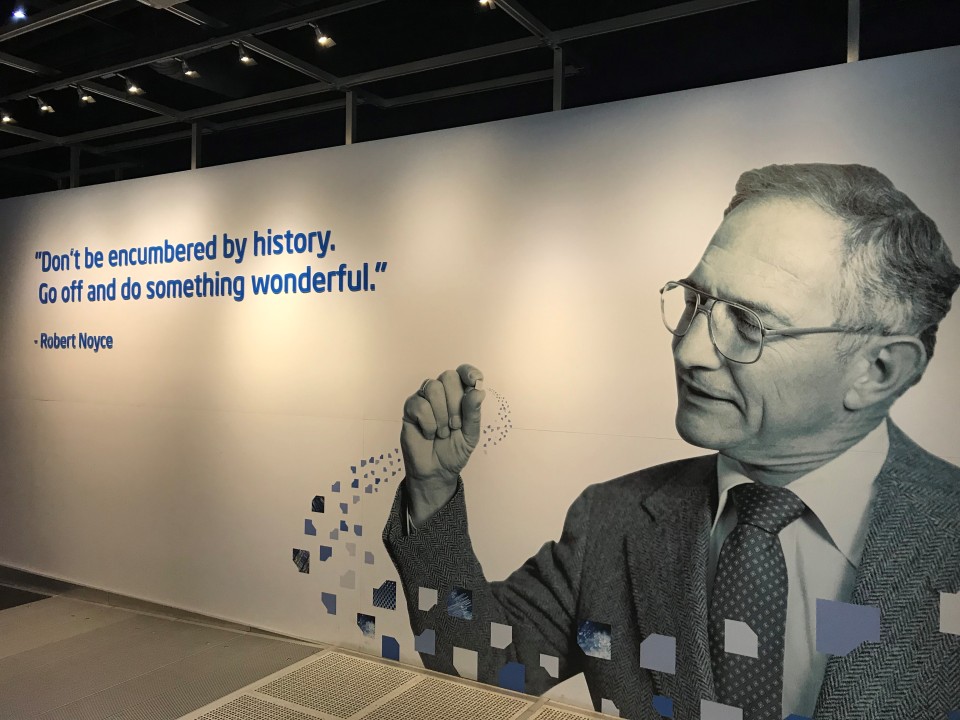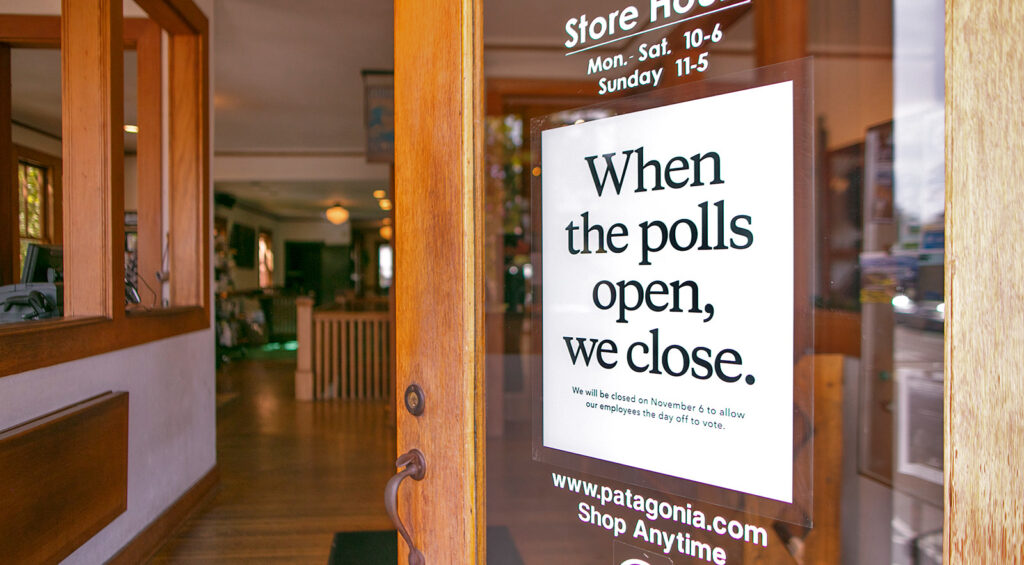The business world is full of old adages and one-liners.
“You have to spend money to make money.”
“Change is the only constant”.
Some are useful. Most aren’t. But of all of them, I’d have to say that my least favorite is: “The customer is always right.”
I get it. It’s a pithy reminder meant to orient your business towards the principle of customer-centricity. That’s not a bad thing: After all, your customers are the ones spending money on you. But long before the point of purchase, there’s another relationship that all businesses should be prioritizing: they’re employees.
So, I vote to change the above one-liner to: “The employee is always right.”
At the risk of trading one platitude for another, I believe businesses, brands, and leaders need to prioritize the employee relationship. To be clear, I’m not saying that customer-centricity isn’t important. It is. But it shouldn’t come at the expense to employee-centricity. Both are vital to your business. I’m bullish on EX. I’d go so far to say that employee experience (EX) takes precedence over the customer experience (CX) for the reason that if you figure out the former, the latter will take care of itself.
To put it another way, your business’s CX strategy is only as good as its EX strategy.
If I’m going to make the argument that your CX strategy is only as good as your EX strategy, then our starting place is to unpack the different types of relationships between employees and customers. After all, not all businesses are built alike. And not all customers are the same, nor do they have the same types of experiences with brands. The point at which an employee meets a customer will depend on the nature of the business and the industry you’re in.
Here’s how I break it down:

The Direct Path: Industries and businesses where employees interact with customers directly, such as retail, tourism, and hospitality.

The Indirect Path: Industries and businesses where employees generally understand that they ‘serve the customer’ in their work behind the scenes but where there is little face-to-face time between employees and customers.

The Roundabout Path: Industries and businesses where the link between employees and customers is almost non-existent. But don’t be fooled: the EX-CX link is still there, and in ways you’d least expect.
Let’s dive into each one.
The EX-CX link #1: A Direct Path to Success
A few years ago, a couple of economists at Glassdoor conducted a study using their proprietary data on people’s ratings of their past and current companies. The researchers found a “strong statistical link between employee well-being reported on Glassdoor and customer satisfaction.”
This was particularly true in industries where contact between employees and customers is close and frequent, including retail, tourism, restaurants, and financial services.
This shouldn’t come as a big surprise. In these types of businesses, the experience of a customer is directly tied to the quality of social interaction between an employee and a customer.
Let’s imagine for a moment that you work in the retail sector. And it ain’t pretty. Your company doesn’t provide you with extra training or development, there’s little importance placed on well-being, and the culture is downright toxic. You hate it there. But it’s a reliable paycheck, so you stick it out.
Service firms must remember that the way they treat their employees is exactly how those employees will, in turn, treat customers.
How do you think you’ll show up for that customer interaction? Will you be engaged, responsive, and ready to go above and beyond for the customer? Probably not. As one research paper puts it so eloquently, “Service firms must remember that the way they treat their employees is exactly how those employees will, in turn, treat customers.”
Customers have needs. We know this. But in order for someone to be enthusiastic about meeting those needs, an employee has to feel that their own needs are being met first. Plenty of research in organizational social psychology has shown that an employee who feels valued and respected is better equipped to understand and empathize with a customer. They can relate to the challenges customers face and, by extension, begin to build a rapport with them.
It isn’t some airy fairy magic. It’s science. Psychologists call it group emotional contagion. It says that people can transfer feelings and moods between each other. It’s been found, for example, that when an employee is in a positive mood, they’re more willing to help the customer and, as a result, put the customer in that same positive mood. They go above and beyond for the customer because they themselves are motivated by the “greater goodwill” initially afforded to them by their own leader and the organization.
It’s a positive feedback cycle: More motivated and happy employees deliver exceptional customer experiences, leading to enhanced customer loyalty and positive feedback, a motivating metric for employees to continue to delight customers each time.
On and on the flywheel spins.
The EX-CX link #2: An Indirect Path to Success
For some businesses, there are so few connecting points between employee and customer that it may make you question the proposed EX-CX link. I’d guess that for most of you reading this, as a knowledge economy worker, you never actually meet the customer in your daily work. The customer, for all intents and purposes, remains a distant abstraction of the business, a persona that you’re reminded of in town halls and quarterly meetings. “Yea, yea, yea – we’re here to serve the customer [eye roll]…”
But, like it or not, the connection is still there. And companies cannot afford to ignore it.
The truth of this bears out in the Glassdoor study I mentioned above. They found a positive relationship between EX and CX, outside of typical service industries where customer-employee interactions are less frequent. Take, for example, the manufacturer giant Johnson & Johnson. They get good ratings for both employees and customers, even though most workers are behind the scenes, away from the frontlines. As one J&J employee said, “We are team players. We get things done. We serve our customers.”
Admittedly, it can be hard to achieve the ‘indirect path’. It requires careful, strategic decision-making on the part of leaders to bring the customer to the forefront of employees’ minds.
It can be an uphill battle. Consider: It’s not uncommon for an average employee to get lost in the busyness of day-to-day realities and responsibilities. We need to deliver Project X by Date Y; we have a project launch and a quarterly revenue budget to hit; we’re close to closing a deal for a new client account, and so on and so forth. We get bogged down by the details. We can’t see the customer forest for the tactical trees of the business. It’s a bias, I believe, that poses a serious risk to many such organizations.
So, leaders need to shift their people’s gaze from time to time in order to see the forest, to get employees and teams to notice why they are there in the first place: to make people (customers, that is) feel better, more fulfilled, happier, connected, and healthier. That’s why the business exists in the first place. People working in the background need to be reminded and motivated to serve that collective end goal.
Transformational leadership does just that. It’s a style of leadership that focuses on positively influencing employees based on a shared vision that reminds people of the organization’s ‘Why.’

Take Intel as one example. As an original giant in the tech industry, Intel’s 50-year success story can be attributed to its brand messaging, “Do something wonderful” the organizational mantra with an inspirational tone that reminds all impacted stakeholders, customers and employees alike that Intel shapes the future to make the world better by pushing the bounds of technology. Transformational leadership is endemic to Intel’s organizational culture.
On reminding people of its purpose, VP of Marketing at Intel, Carolyn Henry, says, “Our brand message is on the walls of our entryways and many of our major offices. And it really is inspiring our folks every day to do their best with technology. It goes deep into the fabric of our technologists and how energized our folks are and speaks to the core belief and need for us to keep innovating.”
Intel’s engineers may be behind the scenes. But they’re not innovating for innovation’s sake. They’re doing it to connect employees and customers with the right technology that generates “real outcomes” for the world.
When your employees are reminded of this mission and vision, the downstream consequences come into view. The business benefits because the employee experience has a strategic basis that connects employees to customers, even though it’s not a typical service industry. Face-to-face doesn’t matter when it comes to the indirect EX-CX path. The employee is still connected to the customer, albeit more symbolically. It’s up to leaders to make the connection more visible and as often as possible.
Now, for you skeptics in the room, you’re probably wondering about the industries where the employee-customer relationship is totally absent. Even if that’s true, I argue that the linkage is still there. Let’s look at this last one next.
The EX-CX link #3: A Roundabout Path to Success
Decades ago, it may have been true that some businesses simply did not have to worry about the EX-CX link (or lack thereof). But that is not the case today. In our hyper-connected global marketplace, a brand can go from hero to zero in the time it takes an influencer to type up a scathing tweet, and it comes down to how you treat your people.
We’re in the age of conscious consumerism. When we buy, we factor in all sorts of different, seemingly irrelevant information about a company or brand. It’s not just about the functional attributes of price and quality determining whether we open our wallet. We want to know that the place and the people behind the business are doing and being good and that they’re aligned with our values.
Today’s customer is a discerning buyer, and she will happily drop your brand if she catches any whiff of bad acting or dishonesty. The treatment of employees, in particular, is something people care about. Customers will quickly disengage if they learn that a company is mistreating its employees or engaging in otherwise unethical behaviors.
A recent Qualtrics study found that more than half of customers (57%) said they are aware of a company’s values of the products and services they purchase. Thirty-six percent said they would immediately stop buying from a brand if they felt disconnected from the company’s stance on societal issues. And nearly half of consumers (47%) said they would trust a company more if they cared for their employees.
There are hero and villain brands where these stats bear out.
Nearly half of consumers (47%) said they would trust a brand more if they took care of their employees, which was just behind taking care of customers (66%).
Take Uber, for example. On multiple occasions over the last few years, Uber mistreated its employees and drivers. The result was the rideshare giant having to deal with #DeleteUber trends as it watched millions of users leave in favor of the more “decent and ethical Lyft.” Uber’s market share and revenue were notably affected by these events, to the tune of $2.9 billion, partly attributed to the negative publicity.

Fortunately, the opposite story also holds true. Patagonia’s emphasis on employee well-being and ethical business practices has created a strong positive image that resonated with the average consumer. They’ve seen consistent and sustained growth over the last decade, topping $1 billion in sales in 2020 as a result. Patagonia takes care of its employees. People take notice, and they become a trusted brand because of it.
It’s a pattern that can be observed on a massive scale. One example of how this plays out involves the world-famous behavioral scientist Dan Ariely, who created a hedge fund that tracks a basket of 81 stocks. The companies are selected based on how well they score on Ariely’s measure of employee happiness and organizational culture. Some companies include Pinterest, Lululemon, and Hyatt. The idea is that companies see better financial returns in the long run if they look after their employees.
When your employees are reminded of the mission and vision, the downstream consequences come into view. The business wins out because the employee experience has a strategic basis that connects employees to customers, even though it’s not a typical service industry.
Face-to-face doesn’t matter here when it comes to the indirect EX-CX path. The employee is still connected to the customer, albeit more symbolically. It’s up to leaders to make the connection more visible and to do it as often as possible. If you do, you’ll win.

Explore the Research
Discover solutions for crafting an employee experience strategy that has the power to revolutionize your customer experience.




